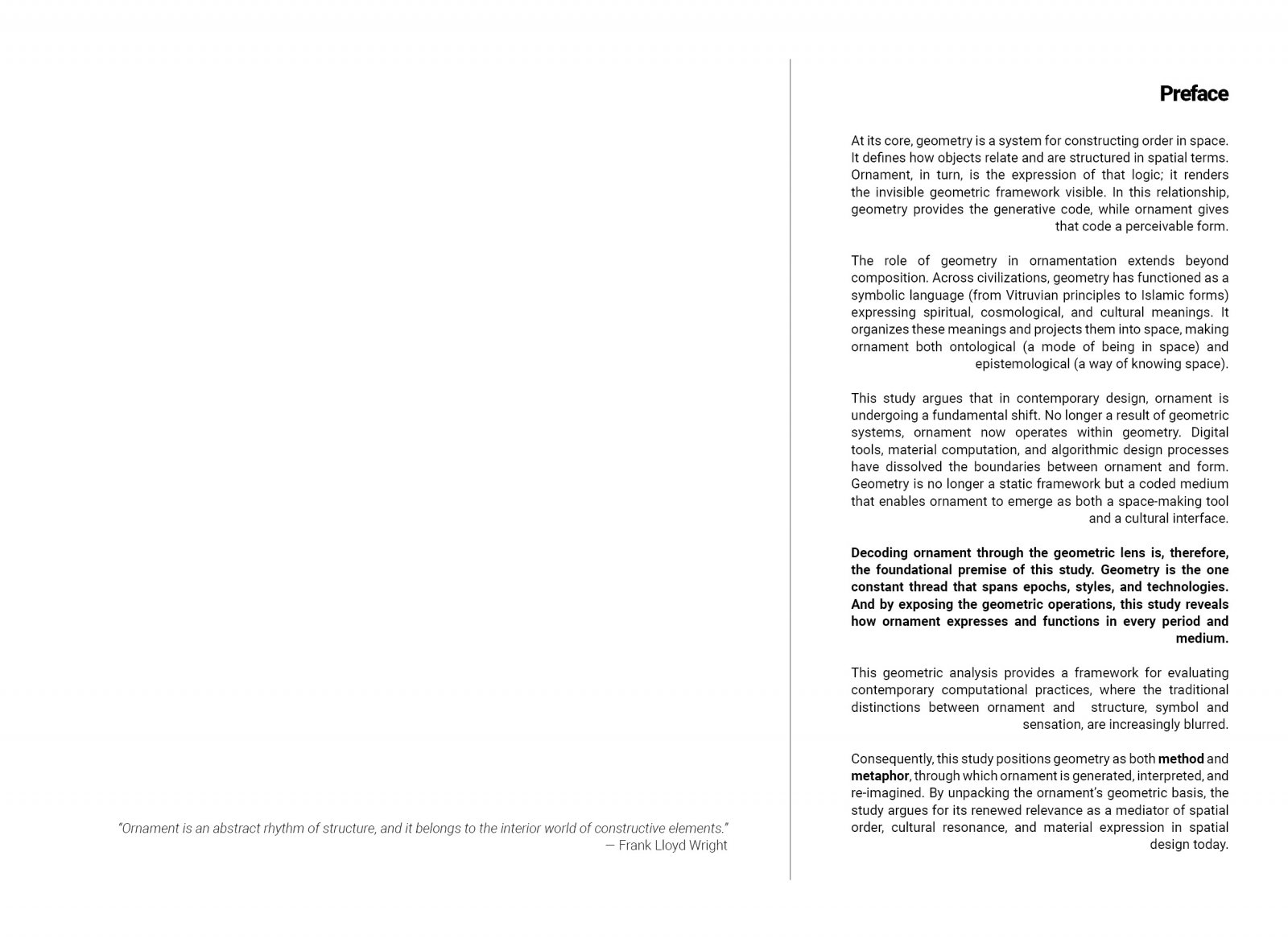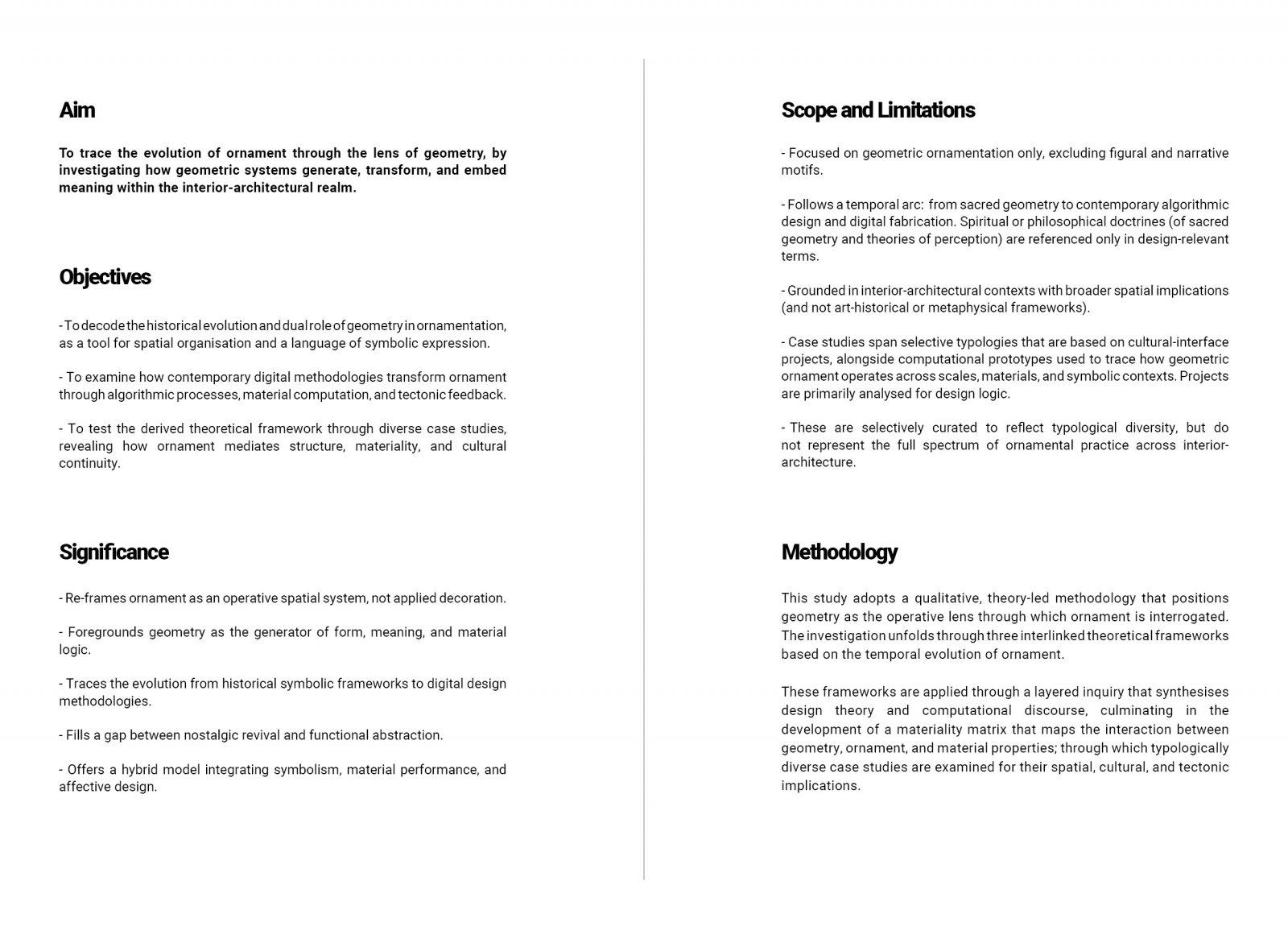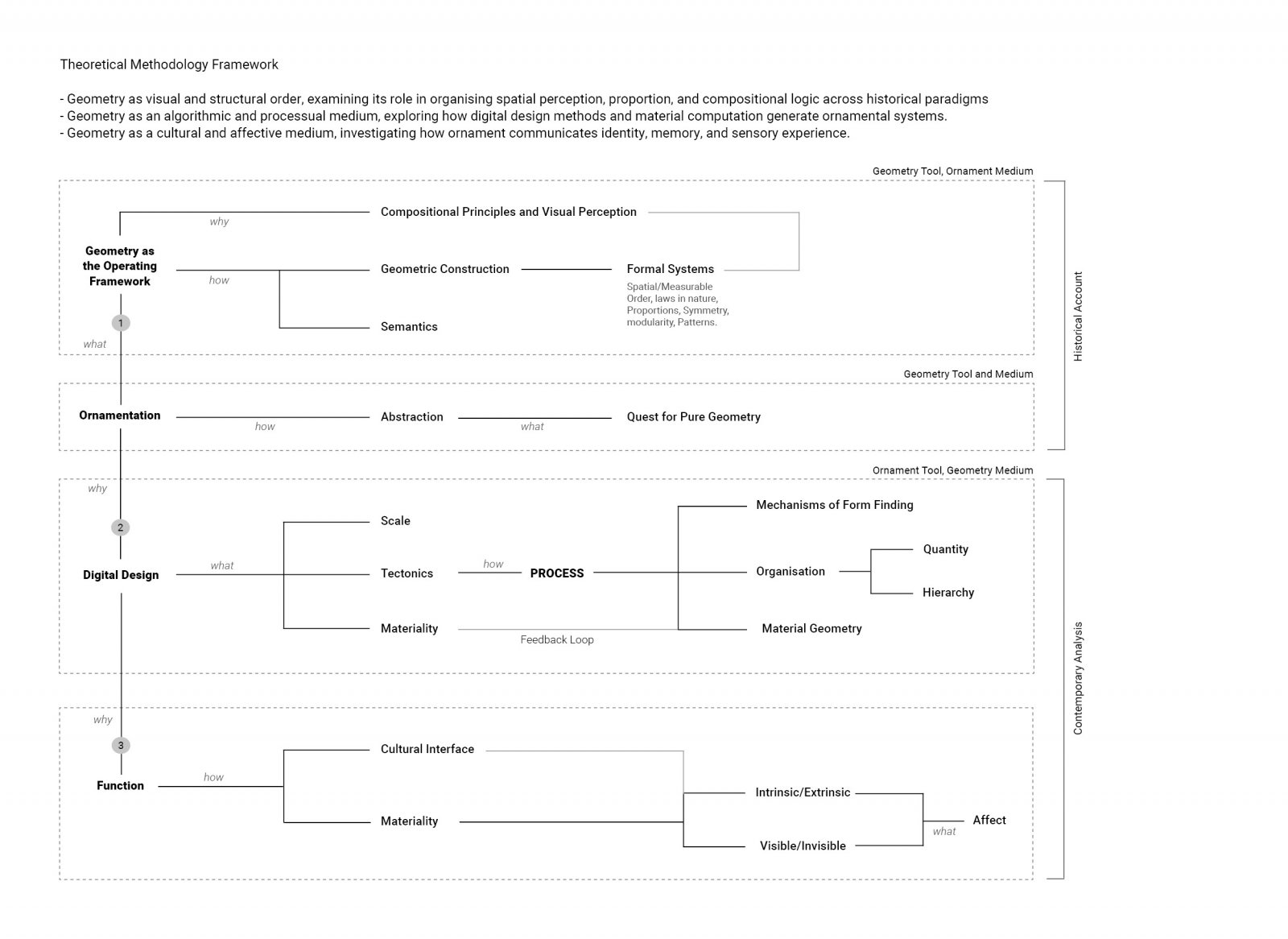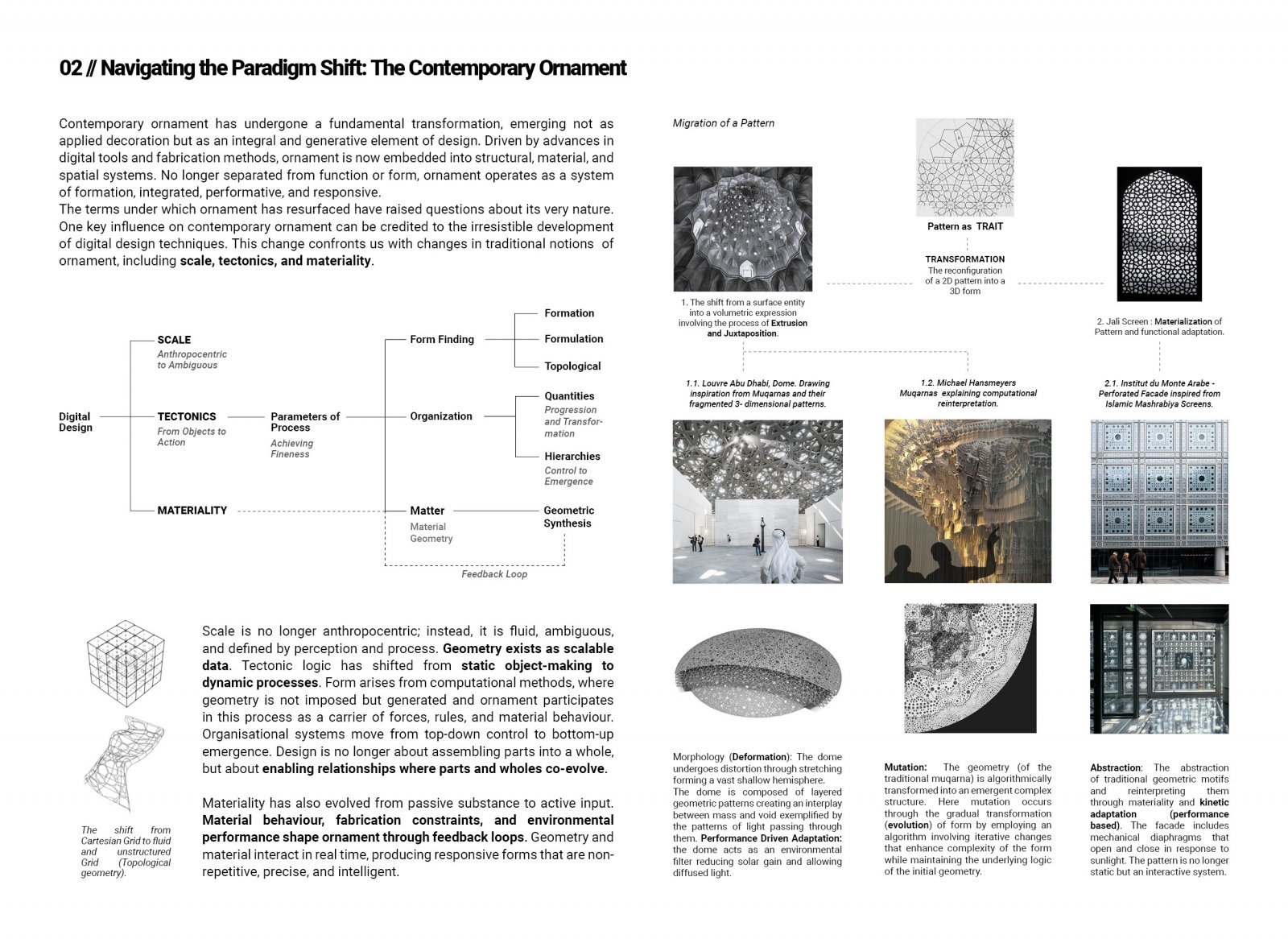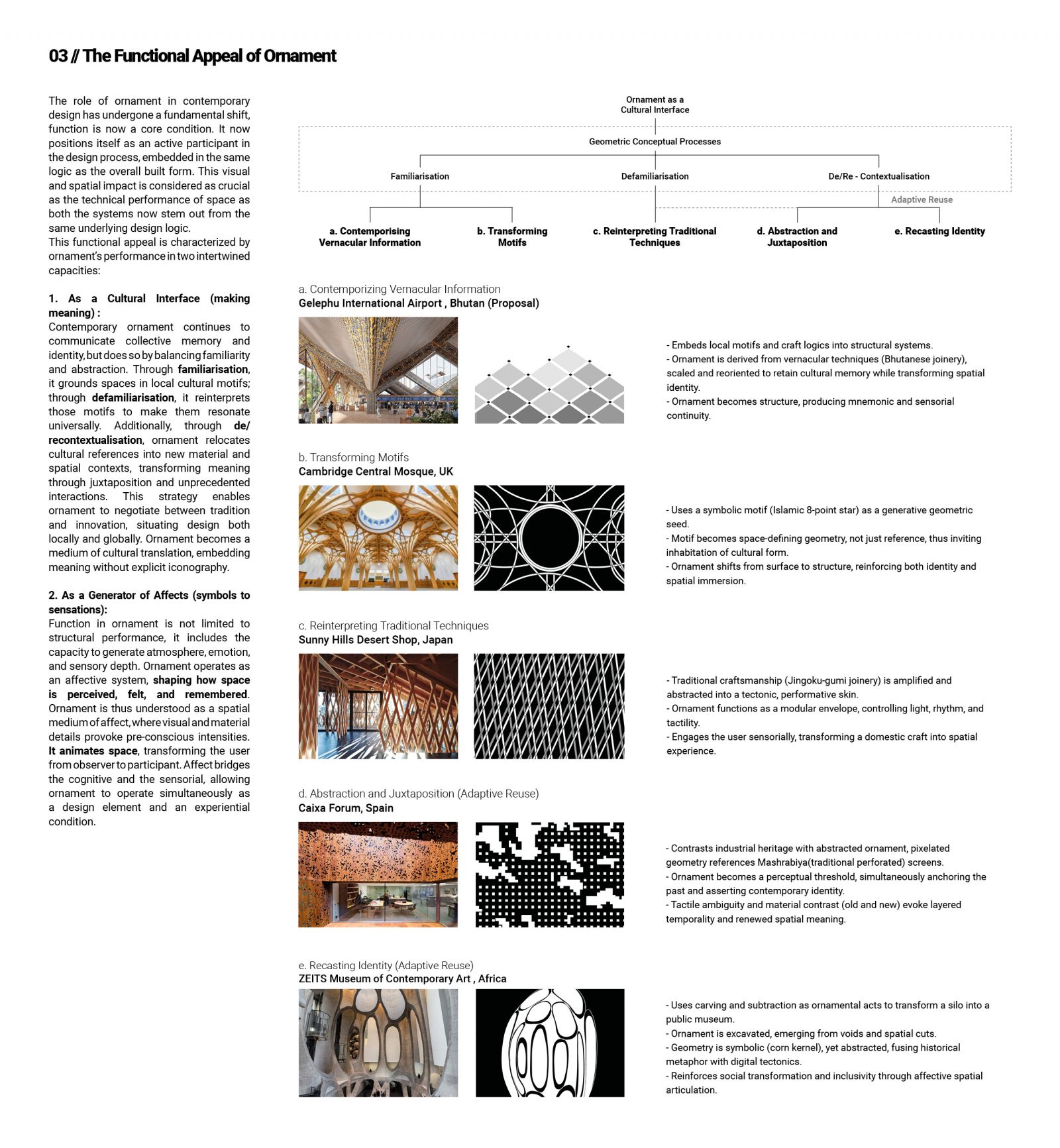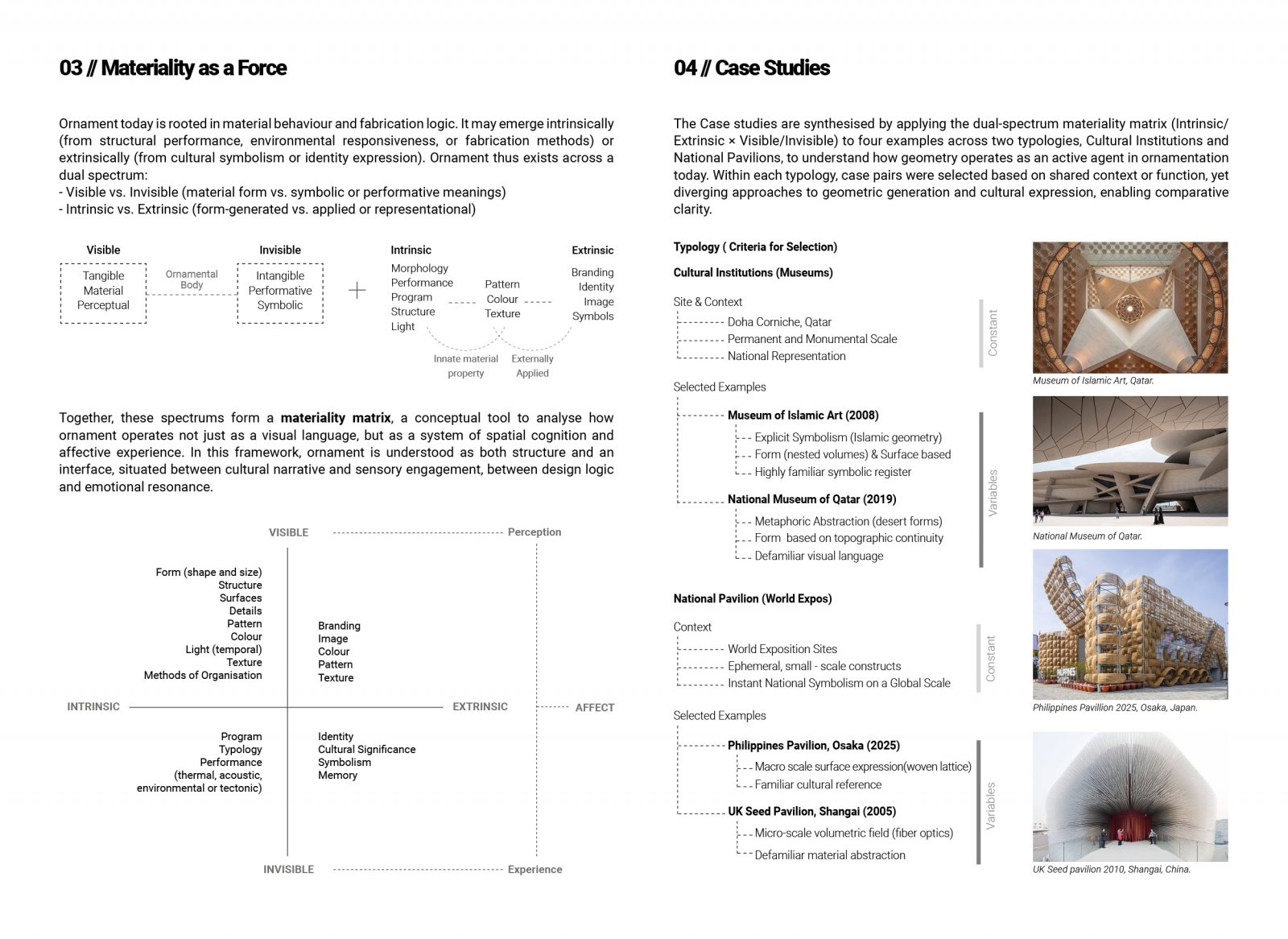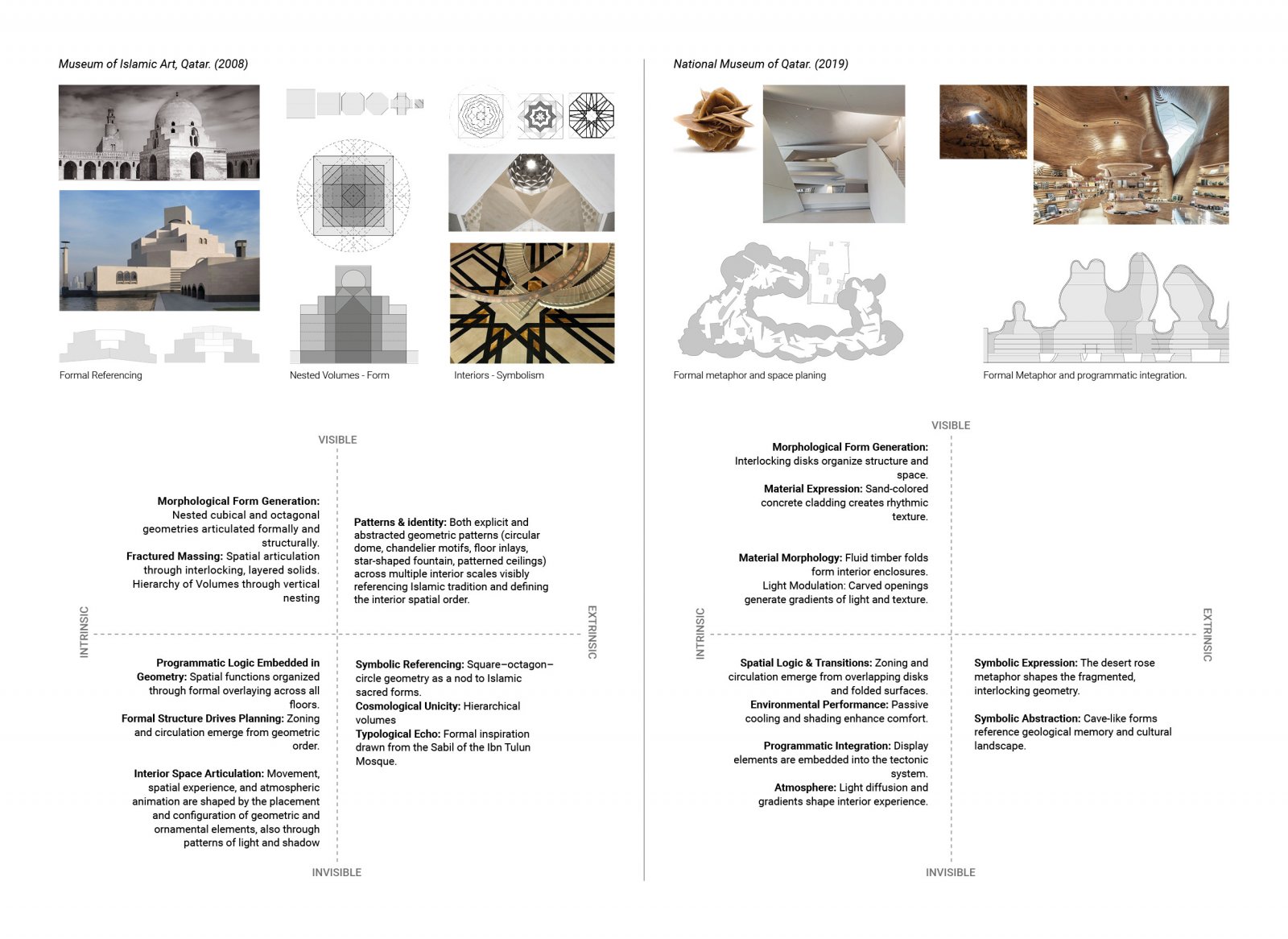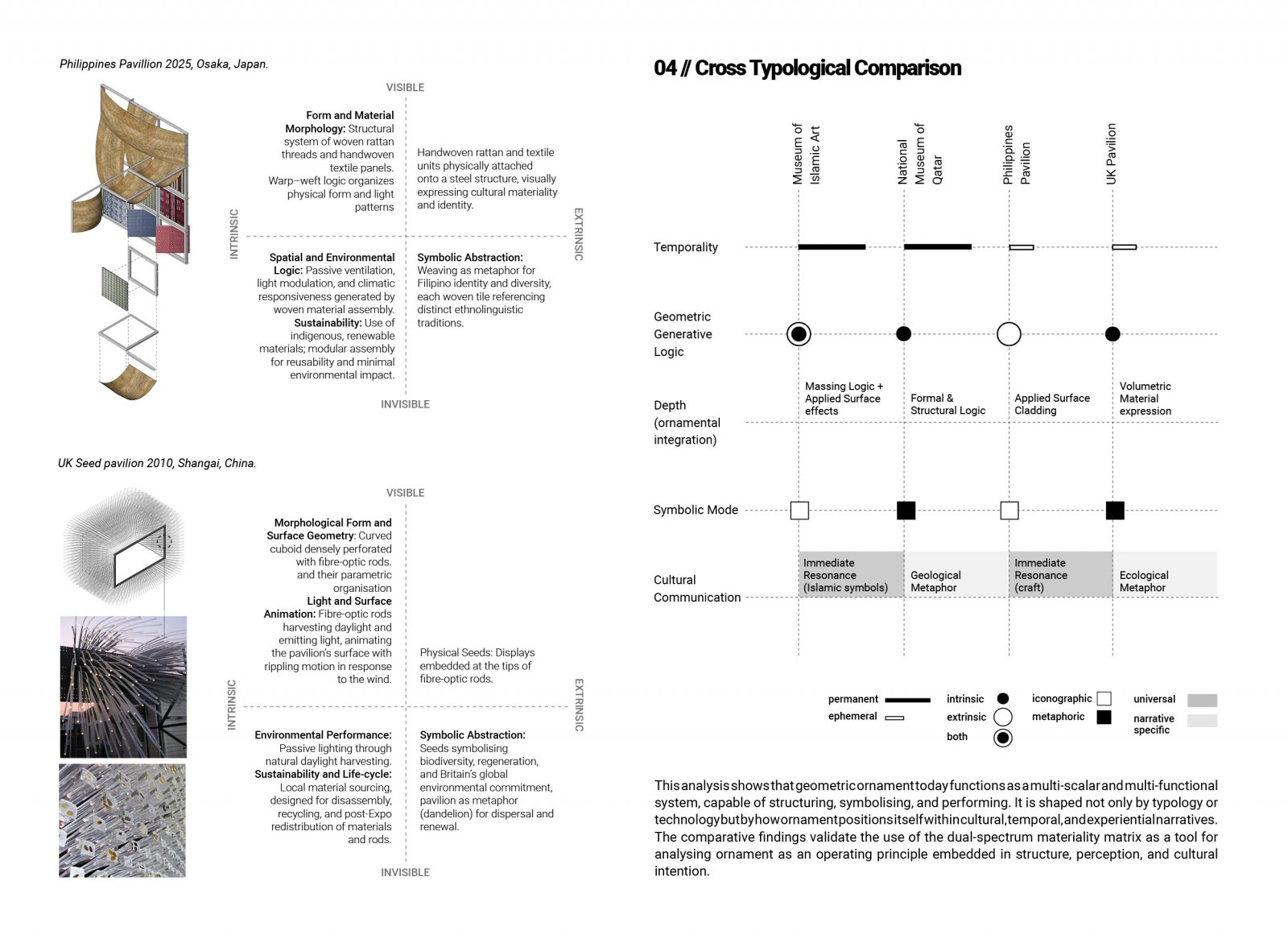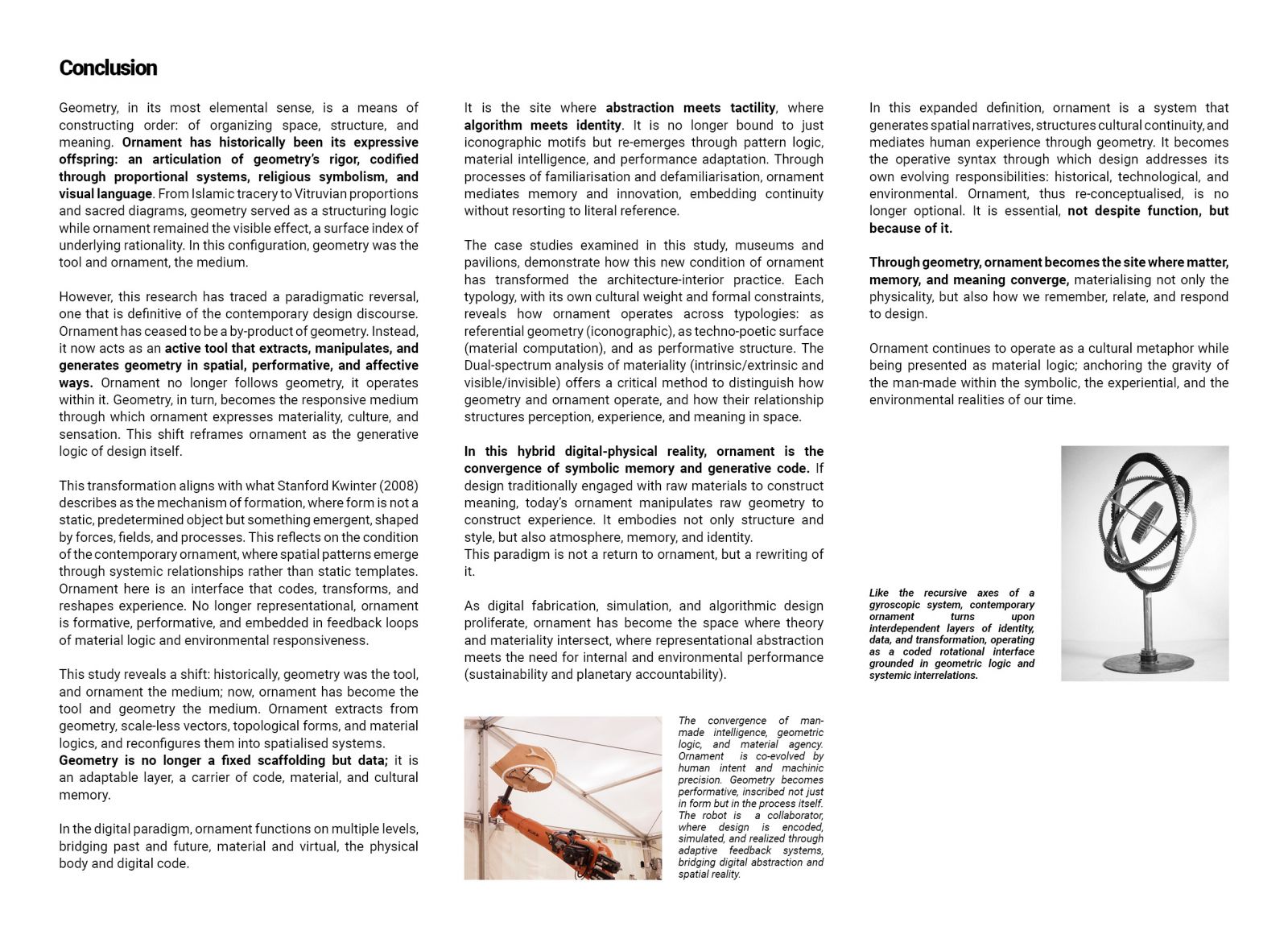Your browser is out-of-date!
For a richer surfing experience on our website, please update your browser. Update my browser now!
For a richer surfing experience on our website, please update your browser. Update my browser now!
Ornament has undergone a complex and often contested evolution in interior-architectural discourse, from sacred symbol to modernist taboo to digitally reimagined system. This research seeks to unpack that trajectory through the lens of geometry, examining how geometry has historically shaped and continues to generate ornamental form and meaning. It investigates how geometry functions as an operative framework for ornamentation in practice, shaping both the organisation of material systems and the communication of symbolic meaning. Ornament is positioned not as applied embellishment but as a dual mechanism: a tool for spatial ordering and a medium of cultural expression. Historically, geometry in ornament adhered to systems of order, hierarchy, and symbolism, visually encoding cultural values. In contrast, contemporary design has shifted towards generative geometric processes, where ornament emerges intrinsically from form, driven by algorithms, material behaviour, and functional criteria. Through a layered inquiry spanning theories of ordering, digital methodologies, and spatial perception, this research synthesises theoretical frameworks with typologically diverse case studies. It aims to redefine ornament as an active system of spatial communication. Geometry, in this light, becomes not only a structuring device but a mediator of affect, identity, and continuity, transforming ornament from an applied entity into a language that bridges material systems and contextual continuity. Click here to view DRP.
